What are the differences between enduro and trail bikes?
Enduro bikes and trail bikes are among the most popular types of mountain bikes. However, distinguishing between these full-suspension bikes can be challenging, especially since many downhill-oriented trail bikes have many similarities with enduro bikes.
This makes it difficult to determine which type of mountain bike is the right choice, and that’s even before you dive into selecting a specific brand or model.
In this comprehensive guide, we will compare enduro bikes and trail bikes, and explain the key distinctions to assist you in deciding which option suits your riding needs.

Understanding Enduro and Trail Bikes
Enduro bikes were initially developed to cater to the demands of the popular enduro race format. Enduro racing requires riders to tackle multiple timed downhill stages, with the rider who achieves the fastest overall time emerging as the victor. The non-timed transitions between stages do exist, but riders have a pre-determined maximum time to complete all the stages.
The finest enduro mountain bikes excel in descending, instilling confidence by providing a stable and predictable ride, even on the most challenging and high-speed trails. When it comes to climbing, an enduro bike should offer both comfort and efficiency, placing the rider in an optimal pedaling position to ascend back up the hill effortlessly before tackling the next timed stage.

Trail bikes, on the other hand, offer versatility, allowing riders to maximize enjoyment while riding. These bikes are designed with the sole purpose of delivering pure riding fun. Andy Lloyd
The finest trail mountain bikes possess a well-rounded nature. They need to find equilibrium between maneuverability and efficiency on level terrain, while also providing confidence and stability on steep descents. When faced with gradual ascents or sharp inclines, trail bikes should offer energy-boosting vibes, motivating riders to conquer those uphill battles.
Achieving these distinct characteristics involves various factors such as geometry, suspension travel, and component choices. Now, let us delve into the details of how and why these distinctions separate trail bikes from enduro bikes.
Comparing Trail Bike and Enduro Bike Geometry
Enduro bikes, exemplified by the impressive Nukeproof Giga 297 Carbon Elite, flaunt slack head tube angles. Okay…— Steve Behr / Our MediaTrail bikes and enduro bikes, in terms of geometry, share some similarities. However, there are crucial differences that tailor these bikes to their intended purposes.
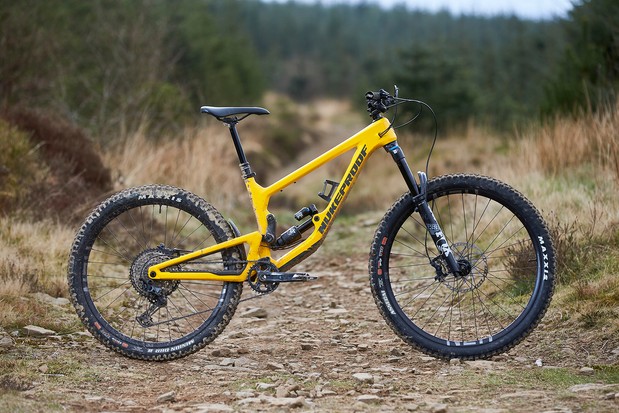
In general, enduro bikes boast a longer wheelbase and reach compared to trail bikes. Additionally, they feature a slacker head tube angle, providing enhanced stability and planted sensations when tackling rough and steep trails at high speeds. On the flip side, this long and slack geometry demands greater rider input to achieve airtime or swift changes in direction at slower speeds or on flatter trails.
Meanwhile, trail bikes offer a livelier experience than enduro bikes thanks to their shorter wheelbase and reach. Take note— Ian Linton / Immediate MediaWhile trail-bike geometry does not dwell at the extreme opposite end of the spectrum from enduro bikes, the slight shorter reach and wheelbase, coupled with a steeper head tube angle, create a sense of liveliness on a broader range of trails. Nevertheless, they may sacrifice a fraction of their descending capabilities when faced with extreme speed and roughness.

Enduro and trail bikes have similar steep effective seat tube angles, typically ranging from 76 to 78 degrees. This positioning ensures that the rider is positioned over the bottom bracket, providing a comfortable and efficient pedaling stance.
Suspension and travel
One key aspect of trail bikes is their suspension travel. The Canyon Spectral, for instance, offers an impressive 150mm of travel. Russell Burton / Immediate Media
Designed with versatility in mind, trail bikes usually have suspension travel ranging from 120mm to 160mm.
Trail bikes with 120mm of travel are ideal for riders who prioritize climbing efficiency over descending prowess. They provide a ride that can be compared to a capable cross-country bike.
On the other hand, trail bikes with 160mm of travel are focused on maximizing fun and performance during descents, sacrificing some climbing efficiency in the process.
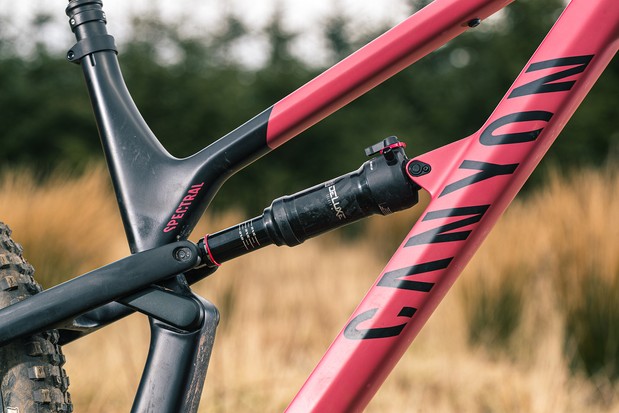
For riders seeking a balance, trail bikes with 140mm of travel are well-suited for trail-center riding, enabling them to conquer technical climbs and descents.
Enduro bikes, on the other hand, need to be able to handle large impacts at high speeds. Steve Behr / Our Media
Typically, enduro bikes boast suspension travel ranging from 150mm to 180mm, with most models leaning towards the upper end of this range.
The variation in suspension travel is often influenced by the brand’s philosophy and approach to creating a fast enduro bike. Some brands prioritize slightly shorter travel for increased maneuverability, while others focus on creating robust and capable bikes.
Enduro Forks – Stiffer and More Resilient
Enduro forks, known for their robustness and durability, feature larger stanchions, typically ranging from 35 to 38mm. Mick Kirkman / Our Media
In the realm of suspension forks, those found on enduro bikes are specially engineered to handle heavy compressions. Due to the demanding nature of enduro riding, these forks necessitate greater stiffness compared to their shorter-travel counterparts.

Therefore, it is quite common to see enduro bikes equipped with forks boasting stanchions measuring 35 to 38mm. The primary aim here is to prioritize stiffness and rigidity, even if it means compromising on weight.
Trail Bikes – Achieving the Perfect Balance
Trail bikes, on the other hand, are often equipped with forks featuring stanchions between 34 and 36mm. This choice allows them to strike a desirable balance between stiffness and weight.
The suitability of suspension travel, on the other hand, depends on various factors, such as the characteristics of your local trails and your personal riding style.
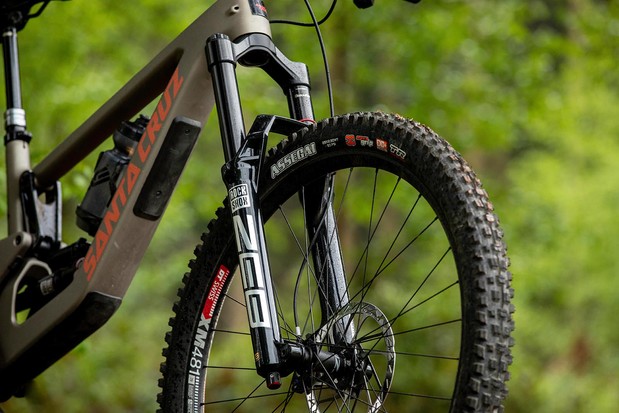
If your riding predominantly encompasses high-speed descents, laden with drops, jumps, and technical obstacles, opting for a bike with travel exceeding 150mm will provide you with a forgiving and confidence-boosting ride. In this scenario, a bike with 120mm of suspension travel may fall short.
Nevertheless, if you relish the ups and downs equally and desire a bike that feels alive on any trail, a travel range of 120 to 140mm might suit you better.
Frame Materials – Choosing Between Carbon and Aluminium
When it comes to enduro and trail bikes, there are two commonly employed frame materials – carbon and aluminium. Both have their own merits.
Aluminium, with its notable durability and commendable strength-to-weight ratio, remains a popular choice for riders seeking affordability. For those on a budget, it delivers a reliable option without compromising on performance. In fact, the Bird Aether pictured here exemplifies the advantages of an aluminium frame. Russell Burton / Immediate Media
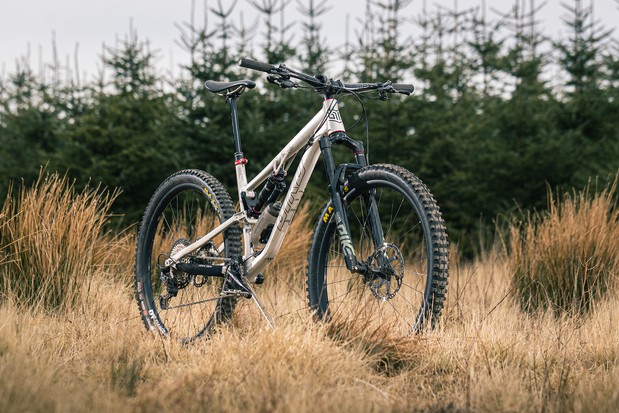
On the other hand, carbon, though more costly, possesses significant appeal due to its reduced weight and heightened stiffness. This makes it an attractive choice for riders aiming to optimize performance and responsiveness.
Steel: A Blend of Strength and Durability
Steel is a remarkable choice, offering a harmonious combination of strength, durability, and the exceptional ability to absorb rough vibrations from the trail. It may be considered a niche option and often comes with a premium price tag, but its advantages make it worth considering.
The Importance of Frame Material
In the ongoing debate between enduro bikes and trail bikes, it is crucial to note that frame material does not solely determine their performance. Rather, the design and weight of the frame play a more significant role in their overall capabilities.
The Lightness Advantage of Trail Bikes
Trail bikes, designed for less demanding applications, undergo relatively lighter loads compared to their enduro counterparts. This allows manufacturers to construct trail bike frames with reduced weight. Coupled with their optimized geometry, these lightweight frames enhance the liveliness of trail bikes, particularly on flatter terrains.

Carbon Frame: Is it Necessary?
The Santa Cruz Bronson, sporting an exquisite carbon frame, comes with a price tag of £8,599 / $9,849. Carbon fiber, once exclusive to high-end bikes, now extends across various price ranges.
While some manufacturers assert that carbon frames possess superior strength-to-weight ratios compared to aluminum, it is important to acknowledge that carbon frames are more prone to scratches or cracks in the unfortunate event of a crash or accidental impact.
Furthermore, the touted rigidity of carbon can be a two-edged sword, potentially resulting in a harsher ride depending on the terrain and the rider’s experience.
Optimal Wheel Size: Maximizing Performance

When it comes to trail and enduro bikes, the choice of wheel size is significant. These bikes typically come with either 27.5 or 29in mountain bike wheels, each catering to specific riding needs. The larger 29in wheels offer superior bump-smoothing capabilities, enhancing the overall comfort and stability of your ride.
Introduction
Almost all contemporary enduro bikes are equipped with 29in wheels, which are renowned for their stability and superior performance at high speeds. These larger wheels excel in providing stability and effortlessly gliding over obstacles compared to smaller mountain bike wheel sizes.
Mullet Setups
The Canyon Torque Mullet enduro bike boasts a combination of 27.5in and 29in wheels. This unique configuration, known as a mullet setup, features a 29in front wheel paired with a 27.5in rear wheel. It has gained popularity among smaller enduro riders who desire the advantages offered by the larger front wheel while also benefitting from the added clearance provided by a slightly smaller rear wheel.
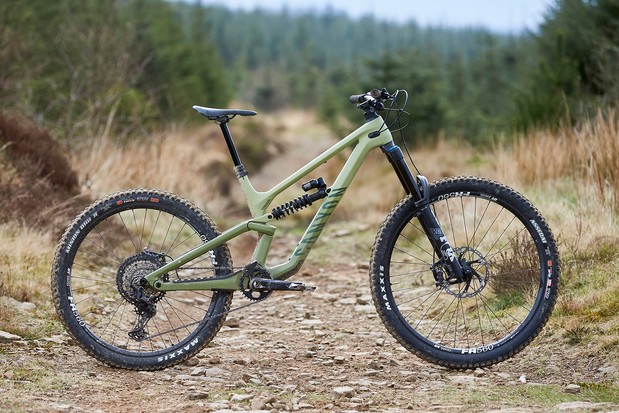
Trail Bikes and Wheel Options
In addition to enduro bikes, 29in wheels are an excellent choice for trail bikes. These wheels offer stability, effectively smoothing out any rough trails and enabling a faster-paced ride. However, if speed is not your primary concern and you seek a bike that is nimble and exhilarating both on the trail and in the air, opting for a mullet setup or a 27.5in wheel size will undoubtedly bring joy to your cycling adventures.
Tyres
When conquering rocky terrains, it is crucial to equip your mountain bike with tyres that feature robust casings, which effectively ward off punctures. As the sole connection point between your bike and the ground, investing in the finest mountain bike tyres available will significantly enhance your overall mountain biking experience.
Enduro Tyres – Maximum Traction and Puncture Protection

Enduro tyres play a crucial role in providing maximum traction and puncture protection, especially when conquering technical downhill sections. To achieve this, these tyres heavily rely on thick casings and soft, grippy rubber compounds. However, it’s important to note that these features contribute to their increased weight and slower-rolling nature compared to the lighter and more efficient tyres commonly found on trail bikes.
Most reputable brands offer a wide range of casings and rubber compounds to suit every rider’s preferences and needs. For riders who aggressively tackle rocky terrains, a robust casing like the Maxxis DoubleDown or Schwalbe SuperGravity is essential to prevent punctures.
On the other hand, for riders who primarily ride smoother trails or weigh less, opting for a slightly lighter casing is more favorable as it enhances rolling speed.
Drivetrain and Gearing – Embracing Efficiency and Reliability
When it comes to trail and enduro bikes, modern trends lean towards 1x drivetrains and wide-ranging cassettes. These drivetrains offer various advantages such as a broad range of gears, reliable shifting, and excellent chain security. They have become the standard in the industry.
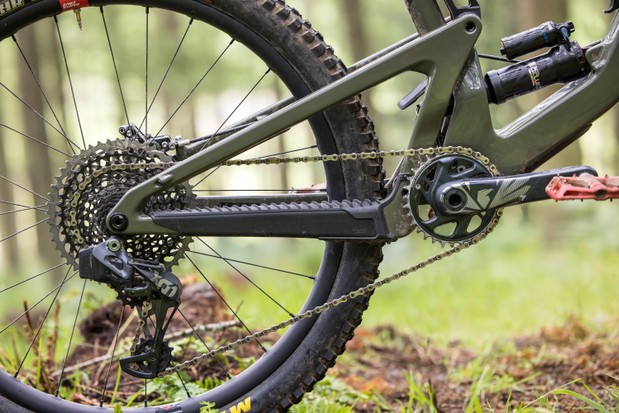
Interestingly, there isn’t a significant difference in the components used between groupsets for enduro and trail bikes. Both categories benefit from robust 12-speed cassettes, as well as durable shifters and derailleurs.
Brakes – Ensuring Optimal Stopping Power
One area where some disparities may arise between trail and enduro bikes is in their braking systems. Enduro bike rotors can exceed a width of 200mm, offering enhanced braking capabilities. It’s important to carefully consider the brake options when choosing between the two categories.
Considering these crucial factors in tyre construction, drivetrain and gearing, as well as the braking system, will allow you to make an informed decision when selecting the perfect bike for your riding adventures.
Enduro Bikes: Powerful Brakes and Large Rotors
Enduro bikes are equipped with robust quad-piston hydraulic brakes and sizable rotors, ranging from 200 to 220mm in diameter. This ensures exceptional stopping power for tackling challenging terrains.
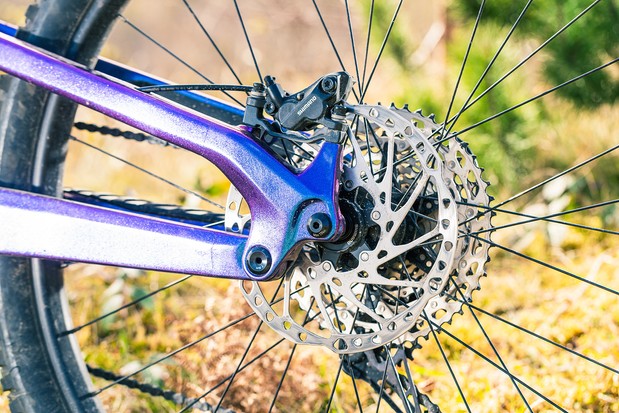
Gravity-Oriented Trail Bikes: Braking with Efficiency
Gravity-oriented trail bikes may also incorporate hydraulic quad-piston brakes, albeit with slightly smaller rotors measuring 180 to 200mm. These reductions in size aim to save valuable weight without compromising braking performance.
Cross-Country Trail Bikes: Emphasizing Weight Savings
Trail bikes leaning more towards the cross-country end of the spectrum push weight savings even further. They incorporate dual-piston brakes that are less powerful than their counterparts, combined with smaller 160 to 180mm rotors. These adaptations aim to enhance the bike’s agility and efficiency in varying terrain.
Regardless of whether you ride a trail or enduro bike, if you are a heavier or more aggressive rider, opting for more potent brakes and larger rotors will greatly benefit your riding experience.
Finishing Kit and Dropper Posts
Dropper posts serve as excellent additions to both trail and enduro bikes. These versatile components play a crucial role in optimizing your ride. [Link: Best Dropper Posts]
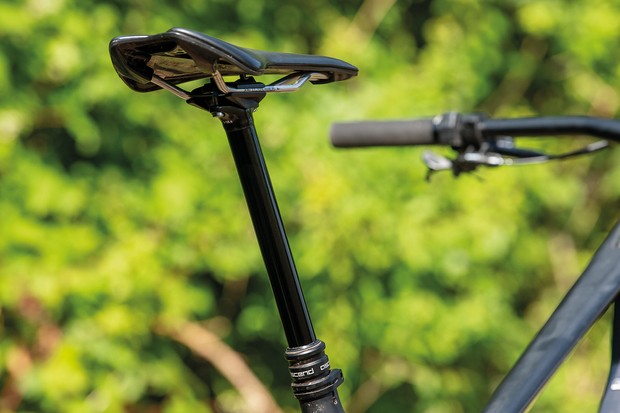
Typically, dropper-post travel on trail and enduro bikes falls within the range of 125 to 170mm. For larger frame sizes, longer-travel dropper posts are often utilized, providing greater flexibility.
The finishing kit of trail and enduro bikes generally shares similarities. Most mountain bikes in these categories come equipped with handlebars measuring between 780 and 800mm wide. These widths can be adjusted to cater to individual preferences when necessary.
Moreover, the wider handlebars contribute to improved stability and handling, enhancing your overall riding experience. [Link: Best Mountain Bike Handlebars]
The stem length on these bikes may vary slightly. Enduro bikes, in particular, tend to feature shorter stems measuring between 35 to 50mm. This adjustment promotes enhanced stability when riding at higher speeds. [Link: Bike Stems]

Trail bikes often come equipped with slightly longer stems, usually in the range of 40 to 60mm. This adjustment improves the steering at low speeds and positions the rider further forward on the bike, allowing them to apply more weight to the front wheel and maintain traction while climbing.
As a general rule, the finishing components on an enduro bike tend to be slightly heavier and more durable compared to those on a trail bike. However, there is some overlap in the “aggressive” category, where enduro and capable trail bikes share similar parts.
Is it possible to race enduro on a trail bike?
An enduro bike specifically designed for racing is undoubtedly the best choice, but trail bikes should not be discounted. If you plan to participate regularly in enduro races, you will likely find more success and enjoyment on a dedicated enduro bike. However, if you are considering entering occasional enduro races and wondering if a trail bike can handle it, there are a few factors to consider.

In theory, a trail bike with over 140mm of suspension travel should be more than capable of completing an enduro race. However, whether it will be a comfortable and enjoyable experience depends on your skill level and the specific bike you are riding.
If you decide to use your trail bike for an enduro race, we recommend fitting aggressive tires and larger brake rotors (minimum of 200mm front and 180mm rear).
You might also want to reconsider your suspension setup to enhance grip and comfort on the trail.
So, should I purchase an enduro or trail bike?
Which option is better for you – a trail bike or an enduro bike? Enduro bikes are the obvious choice if you are primarily interested in participating in enduro races. However, they are also a great choice for non-racing purposes.
If you frequently ride rough, fast, and steep trails, and spend a significant amount of time at bike parks or utilizing uplift services, you will appreciate the capability and confidence that comes with an enduro bike. While they may not be the most efficient on climbs, enduro bikes are designed to provide comfort while ascending back to the top of the hill.

On the other hand, a lightweight trail bike with around 120mm of travel is a suitable option if you enjoy chasing your personal best times on climbs as much as descents. These bikes with shorter travel offer superior pedaling efficiency both uphill and downhill, although they may have limitations on particularly steep and challenging trails.
If your ideal weekend involves technical descents off the beaten path on Saturday and a lap on a local trail center’s red route on Sunday, a capable trail bike with 140 to 160mm of suspension will give you the best of both worlds. Such trail bikes deliver an engaging ride on almost any descent while also offering competent climbing capabilities.








